使用 Go 在形状边界上对像素进行排序
一分耕耘,一分收获!既然打开了这篇文章《使用 Go 在形状边界上对像素进行排序》,就坚持看下去吧!文中内容包含等等知识点...希望你能在阅读本文后,能真真实实学到知识或者帮你解决心中的疑惑,也欢迎大佬或者新人朋友们多留言评论,多给建议!谢谢!
我编写了这个小程序,它读取 png 文件,并查找图像中属于所描绘形状的边框一部分的任何像素的坐标(代码如下)。
我们在这里定义“边框的像素部分”为“每个在顶部、底部或一侧有一个白色像素的彩色像素”.
这个简单的算法找到形状的边界,并忽略构成形状填充的任何空(白色)像素和任何非空(彩色)像素。
我得到的是 point 的切片,其中包含所有这些像素的坐标,打印在屏幕上,但它们是根据找到它们的扫描过程自然排序的,从上到下,从左到右。
我想要实现的是对边界点进行排序,就像它们围绕形状绘制一条连续线一样,从遇到的第一个边界像素开始,并围绕形状按顺时针顺序前进。
对于像这样的正方形(抱歉,图像很小):
8x8 像素,在 10x10 像素的网格中,我得到这个坐标:
2,2 3,2 4,2 5,2 6,2 7,2 2,3 7,3 2,4 7,4 2,5 7,5 2,6 7,6 2,7 3,7 4,7 5,7 6,7 7,7
或者,以图形方式
但我真正想要的是这个(我已经手动排序了这些点):
2,2 3,2 4,2 5,2 6,2 7,2 7,3 7,4 7,5 7,6 7,7 6,7 5,7 4,7 3,7 2,7 2,6 2,5 2,4 2,3
或者,对于这个小 h 形状
我明白了:
2,2 3,2 6,2 7,2 2,3 3,3 6,3 7,3 2,4 4,4 5,4 7,4 2,5 4,5 5,5 7,5 2,6 3,6 6,6 7,6 2,7 3,7 6,7 7,7
但我想要这个(也是手动排序的):
2,2 3,2 3,3 4,4 5,4 6,3 6,2 7,2 7,3 7,4 7,5 7,6 7,7 6,7 6,6 5,5 4,5 3,6 3,7 2,7 2,6 2,5 2,4 2,3
我希望能够很好地说明我的情况。我试图自己思考解决方案,但我不知道如何解决这样的问题。如果您有直接的解决方案或想为我指出正确的方向,或者一些有关此类问题及其解决方案的阅读材料,我将非常感激。
抱歉我的英语不好。
这是我的代码:
package main
import (
"fmt"
"image"
"image/png"
"io"
"os"
)
var (
println = fmt.println
printf = fmt.printf
)
type pixel struct {
r int
g int
b int
}
type point struct {
x int
y int
}
func main() {
imagefilename := "square1.png"
image.registerformat("png", "png", png.decode, png.decodeconfig)
file, err := os.open(imagefilename)
if err != nil {
println("error: file could not be opened")
os.exit(1)
}
defer file.close()
pixels, err := getpixels(file)
if err != nil {
println("error: image could not be decoded")
os.exit(1)
}
borders := findborders(pixels)
// sorting the borders points in clockwise order starting from the first encountered point (but how?)
// borders = sortborders(borders)
// print borders points
for _, point := range borders {
printf("%d,%d\n", point.x, point.y)
}
}
func findborders(pixels [][]pixel) []point {
var borders []point
for y := 0; y < len(pixels); y++ {
for x := 0; x < len(pixels[y]); x++ {
pixel := pixels[y][x]
if !whitepixel(pixel) {
if whitepixel(pixels[y-1][x]) ||
whitepixel(pixels[y][x-1]) ||
whitepixel(pixels[y+1][x]) ||
whitepixel(pixels[y][x+1]) {
borders = append(borders, point{x, y})
}
}
}
}
return borders
}
// return true if a pixel is white
func whitepixel(pixel pixel) bool {
return pixel.r == 255 && pixel.g == 255 && pixel.b == 255
}
// get the bi-dimensional pixel array
func getpixels(file io.reader) ([][]pixel, error) {
img, _, err := image.decode(file)
if err != nil {
return nil, err
}
bounds := img.bounds()
width, height := bounds.max.x, bounds.max.y
var pixels [][]pixel
for y := 0; y < height; y++ {
var row []pixel
for x := 0; x < width; x++ {
row = append(row, rgbatopixel(img.at(x, y).rgba()))
}
pixels = append(pixels, row)
}
return pixels, nil
}
// img.at(x, y).rgba() returns four uint32 values, we need something a little more comfortable
func rgbatopixel(r uint32, g uint32, b uint32, a uint32) pixel {
return pixel{int(r / 257), int(g / 257), int(b / 257)}
}
编辑
我几乎找到了解决方案。对于正方形示例,如果在角点 {7, 7} 和 {2, 7} 处失败,因为在我看来,当它在垂直或水平邻居之前找到对角邻居时,如果它在unsorted 切片此算法认为它足够好,并且跳过最接近的切片,而该切片仍然被忽略。请看一下:
func sortborders(unsorted []point) []point {
original := make([]point, len(unsorted))
copy(original, unsorted)
expected := []point{{2, 2}, {3, 2}, {4, 2}, {5, 2}, {6, 2}, {7, 2}, {7, 3}, {7, 4}, {7, 5}, {7, 6}, {7, 7}, {6, 7}, {5, 7}, {4, 7}, {3, 7}, {2, 7}, {2, 6}, {2, 5}, {2, 4}, {2, 3}}
// finding the first one is easy
sorted := []point{unsorted[0]}
unsorted = unsorted[1:]
stillunsorted := func() bool {
return len(unsorted) > 0
}
lastsorted := func() point {
return sorted[len(sorted)-1]
}
neighbor := func(s, u point) bool {
if (s.x == u.x || s.x == u.x+1 || s.x == u.x-1) && (s.y == u.y || s.y == u.y+1 || s.y == u.y-1) {
return true
}
return false
}
removefromunsorted := func(index int) {
fresh := unsorted[:index]
unsorted = append(fresh, unsorted[index+1:]...)
}
addtosorted := func(point point) {
sorted = append(sorted, point)
}
for stillunsorted() {
for i, point := range unsorted {
if neighbor(lastsorted(), point) {
removefromunsorted(i)
addtosorted(point)
println("---------")
println("original:", original)
println("unsorted:", unsorted)
println("sorted :", sorted)
println("expected:", expected)
break
}
}
}
return sorted
}
对于上面的方形示例,会产生以下输出:
original: [{2 2} {3 2} {4 2} {5 2} {6 2} {7 2} {2 3} {7 3} {2 4} {7 4} {2 5} {7 5} {2 6} {7 6} {2 7} {3 7} {4 7} {5 7} {6 7} {7 7}]
unsorted: [{4 2} {5 2} {6 2} {7 2} {2 3} {7 3} {2 4} {7 4} {2 5} {7 5} {2 6} {7 6} {2 7} {3 7} {4 7} {5 7} {6 7} {7 7}]
sorted : [{2 2} {3 2}]
expected: [{2 2} {3 2} {4 2} {5 2} {6 2} {7 2} {7 3} {7 4} {7 5} {7 6} {7 7} {6 7} {5 7} {4 7} {3 7} {2 7} {2 6} {2 5} {2 4} {2 3}]
---------
original: [{2 2} {3 2} {4 2} {5 2} {6 2} {7 2} {2 3} {7 3} {2 4} {7 4} {2 5} {7 5} {2 6} {7 6} {2 7} {3 7} {4 7} {5 7} {6 7} {7 7}]
unsorted: [{5 2} {6 2} {7 2} {2 3} {7 3} {2 4} {7 4} {2 5} {7 5} {2 6} {7 6} {2 7} {3 7} {4 7} {5 7} {6 7} {7 7}]
sorted : [{2 2} {3 2} {4 2}]
expected: [{2 2} {3 2} {4 2} {5 2} {6 2} {7 2} {7 3} {7 4} {7 5} {7 6} {7 7} {6 7} {5 7} {4 7} {3 7} {2 7} {2 6} {2 5} {2 4} {2 3}]
---------
original: [{2 2} {3 2} {4 2} {5 2} {6 2} {7 2} {2 3} {7 3} {2 4} {7 4} {2 5} {7 5} {2 6} {7 6} {2 7} {3 7} {4 7} {5 7} {6 7} {7 7}]
unsorted: [{6 2} {7 2} {2 3} {7 3} {2 4} {7 4} {2 5} {7 5} {2 6} {7 6} {2 7} {3 7} {4 7} {5 7} {6 7} {7 7}]
sorted : [{2 2} {3 2} {4 2} {5 2}]
expected: [{2 2} {3 2} {4 2} {5 2} {6 2} {7 2} {7 3} {7 4} {7 5} {7 6} {7 7} {6 7} {5 7} {4 7} {3 7} {2 7} {2 6} {2 5} {2 4} {2 3}]
---------
original: [{2 2} {3 2} {4 2} {5 2} {6 2} {7 2} {2 3} {7 3} {2 4} {7 4} {2 5} {7 5} {2 6} {7 6} {2 7} {3 7} {4 7} {5 7} {6 7} {7 7}]
unsorted: [{7 2} {2 3} {7 3} {2 4} {7 4} {2 5} {7 5} {2 6} {7 6} {2 7} {3 7} {4 7} {5 7} {6 7} {7 7}]
sorted : [{2 2} {3 2} {4 2} {5 2} {6 2}]
expected: [{2 2} {3 2} {4 2} {5 2} {6 2} {7 2} {7 3} {7 4} {7 5} {7 6} {7 7} {6 7} {5 7} {4 7} {3 7} {2 7} {2 6} {2 5} {2 4} {2 3}]
---------
original: [{2 2} {3 2} {4 2} {5 2} {6 2} {7 2} {2 3} {7 3} {2 4} {7 4} {2 5} {7 5} {2 6} {7 6} {2 7} {3 7} {4 7} {5 7} {6 7} {7 7}]
unsorted: [{2 3} {7 3} {2 4} {7 4} {2 5} {7 5} {2 6} {7 6} {2 7} {3 7} {4 7} {5 7} {6 7} {7 7}]
sorted : [{2 2} {3 2} {4 2} {5 2} {6 2} {7 2}]
expected: [{2 2} {3 2} {4 2} {5 2} {6 2} {7 2} {7 3} {7 4} {7 5} {7 6} {7 7} {6 7} {5 7} {4 7} {3 7} {2 7} {2 6} {2 5} {2 4} {2 3}]
---------
original: [{2 2} {3 2} {4 2} {5 2} {6 2} {7 2} {2 3} {7 3} {2 4} {7 4} {2 5} {7 5} {2 6} {7 6} {2 7} {3 7} {4 7} {5 7} {6 7} {7 7}]
unsorted: [{2 3} {2 4} {7 4} {2 5} {7 5} {2 6} {7 6} {2 7} {3 7} {4 7} {5 7} {6 7} {7 7}]
sorted : [{2 2} {3 2} {4 2} {5 2} {6 2} {7 2} {7 3}]
expected: [{2 2} {3 2} {4 2} {5 2} {6 2} {7 2} {7 3} {7 4} {7 5} {7 6} {7 7} {6 7} {5 7} {4 7} {3 7} {2 7} {2 6} {2 5} {2 4} {2 3}]
---------
original: [{2 2} {3 2} {4 2} {5 2} {6 2} {7 2} {2 3} {7 3} {2 4} {7 4} {2 5} {7 5} {2 6} {7 6} {2 7} {3 7} {4 7} {5 7} {6 7} {7 7}]
unsorted: [{2 3} {2 4} {2 5} {7 5} {2 6} {7 6} {2 7} {3 7} {4 7} {5 7} {6 7} {7 7}]
sorted : [{2 2} {3 2} {4 2} {5 2} {6 2} {7 2} {7 3} {7 4}]
expected: [{2 2} {3 2} {4 2} {5 2} {6 2} {7 2} {7 3} {7 4} {7 5} {7 6} {7 7} {6 7} {5 7} {4 7} {3 7} {2 7} {2 6} {2 5} {2 4} {2 3}]
---------
original: [{2 2} {3 2} {4 2} {5 2} {6 2} {7 2} {2 3} {7 3} {2 4} {7 4} {2 5} {7 5} {2 6} {7 6} {2 7} {3 7} {4 7} {5 7} {6 7} {7 7}]
unsorted: [{2 3} {2 4} {2 5} {2 6} {7 6} {2 7} {3 7} {4 7} {5 7} {6 7} {7 7}]
sorted : [{2 2} {3 2} {4 2} {5 2} {6 2} {7 2} {7 3} {7 4} {7 5}]
expected: [{2 2} {3 2} {4 2} {5 2} {6 2} {7 2} {7 3} {7 4} {7 5} {7 6} {7 7} {6 7} {5 7} {4 7} {3 7} {2 7} {2 6} {2 5} {2 4} {2 3}]
---------
original: [{2 2} {3 2} {4 2} {5 2} {6 2} {7 2} {2 3} {7 3} {2 4} {7 4} {2 5} {7 5} {2 6} {7 6} {2 7} {3 7} {4 7} {5 7} {6 7} {7 7}]
unsorted: [{2 3} {2 4} {2 5} {2 6} {2 7} {3 7} {4 7} {5 7} {6 7} {7 7}]
sorted : [{2 2} {3 2} {4 2} {5 2} {6 2} {7 2} {7 3} {7 4} {7 5} {7 6}]
expected: [{2 2} {3 2} {4 2} {5 2} {6 2} {7 2} {7 3} {7 4} {7 5} {7 6} {7 7} {6 7} {5 7} {4 7} {3 7} {2 7} {2 6} {2 5} {2 4} {2 3}]
---------
original: [{2 2} {3 2} {4 2} {5 2} {6 2} {7 2} {2 3} {7 3} {2 4} {7 4} {2 5} {7 5} {2 6} {7 6} {2 7} {3 7} {4 7} {5 7} {6 7} {7 7}]
unsorted: [{2 3} {2 4} {2 5} {2 6} {2 7} {3 7} {4 7} {5 7} {7 7}]
sorted : [{2 2} {3 2} {4 2} {5 2} {6 2} {7 2} {7 3} {7 4} {7 5} {7 6} {6 7}]
expected: [{2 2} {3 2} {4 2} {5 2} {6 2} {7 2} {7 3} {7 4} {7 5} {7 6} {7 7} {6 7} {5 7} {4 7} {3 7} {2 7} {2 6} {2 5} {2 4} {2 3}]
---------
original: [{2 2} {3 2} {4 2} {5 2} {6 2} {7 2} {2 3} {7 3} {2 4} {7 4} {2 5} {7 5} {2 6} {7 6} {2 7} {3 7} {4 7} {5 7} {6 7} {7 7}]
unsorted: [{2 3} {2 4} {2 5} {2 6} {2 7} {3 7} {4 7} {7 7}]
sorted : [{2 2} {3 2} {4 2} {5 2} {6 2} {7 2} {7 3} {7 4} {7 5} {7 6} {6 7} {5 7}]
expected: [{2 2} {3 2} {4 2} {5 2} {6 2} {7 2} {7 3} {7 4} {7 5} {7 6} {7 7} {6 7} {5 7} {4 7} {3 7} {2 7} {2 6} {2 5} {2 4} {2 3}]
---------
original: [{2 2} {3 2} {4 2} {5 2} {6 2} {7 2} {2 3} {7 3} {2 4} {7 4} {2 5} {7 5} {2 6} {7 6} {2 7} {3 7} {4 7} {5 7} {6 7} {7 7}]
unsorted: [{2 3} {2 4} {2 5} {2 6} {2 7} {3 7} {7 7}]
sorted : [{2 2} {3 2} {4 2} {5 2} {6 2} {7 2} {7 3} {7 4} {7 5} {7 6} {6 7} {5 7} {4 7}]
expected: [{2 2} {3 2} {4 2} {5 2} {6 2} {7 2} {7 3} {7 4} {7 5} {7 6} {7 7} {6 7} {5 7} {4 7} {3 7} {2 7} {2 6} {2 5} {2 4} {2 3}]
---------
original: [{2 2} {3 2} {4 2} {5 2} {6 2} {7 2} {2 3} {7 3} {2 4} {7 4} {2 5} {7 5} {2 6} {7 6} {2 7} {3 7} {4 7} {5 7} {6 7} {7 7}]
unsorted: [{2 3} {2 4} {2 5} {2 6} {2 7} {7 7}]
sorted : [{2 2} {3 2} {4 2} {5 2} {6 2} {7 2} {7 3} {7 4} {7 5} {7 6} {6 7} {5 7} {4 7} {3 7}]
expected: [{2 2} {3 2} {4 2} {5 2} {6 2} {7 2} {7 3} {7 4} {7 5} {7 6} {7 7} {6 7} {5 7} {4 7} {3 7} {2 7} {2 6} {2 5} {2 4} {2 3}]
---------
original: [{2 2} {3 2} {4 2} {5 2} {6 2} {7 2} {2 3} {7 3} {2 4} {7 4} {2 5} {7 5} {2 6} {7 6} {2 7} {3 7} {4 7} {5 7} {6 7} {7 7}]
unsorted: [{2 3} {2 4} {2 5} {2 7} {7 7}]
sorted : [{2 2} {3 2} {4 2} {5 2} {6 2} {7 2} {7 3} {7 4} {7 5} {7 6} {6 7} {5 7} {4 7} {3 7} {2 6}]
expected: [{2 2} {3 2} {4 2} {5 2} {6 2} {7 2} {7 3} {7 4} {7 5} {7 6} {7 7} {6 7} {5 7} {4 7} {3 7} {2 7} {2 6} {2 5} {2 4} {2 3}]
---------
original: [{2 2} {3 2} {4 2} {5 2} {6 2} {7 2} {2 3} {7 3} {2 4} {7 4} {2 5} {7 5} {2 6} {7 6} {2 7} {3 7} {4 7} {5 7} {6 7} {7 7}]
unsorted: [{2 3} {2 4} {2 7} {7 7}]
sorted : [{2 2} {3 2} {4 2} {5 2} {6 2} {7 2} {7 3} {7 4} {7 5} {7 6} {6 7} {5 7} {4 7} {3 7} {2 6} {2 5}]
expected: [{2 2} {3 2} {4 2} {5 2} {6 2} {7 2} {7 3} {7 4} {7 5} {7 6} {7 7} {6 7} {5 7} {4 7} {3 7} {2 7} {2 6} {2 5} {2 4} {2 3}]
---------
original: [{2 2} {3 2} {4 2} {5 2} {6 2} {7 2} {2 3} {7 3} {2 4} {7 4} {2 5} {7 5} {2 6} {7 6} {2 7} {3 7} {4 7} {5 7} {6 7} {7 7}]
unsorted: [{2 3} {2 7} {7 7}]
sorted : [{2 2} {3 2} {4 2} {5 2} {6 2} {7 2} {7 3} {7 4} {7 5} {7 6} {6 7} {5 7} {4 7} {3 7} {2 6} {2 5} {2 4}]
expected: [{2 2} {3 2} {4 2} {5 2} {6 2} {7 2} {7 3} {7 4} {7 5} {7 6} {7 7} {6 7} {5 7} {4 7} {3 7} {2 7} {2 6} {2 5} {2 4} {2 3}]
---------
original: [{2 2} {3 2} {4 2} {5 2} {6 2} {7 2} {2 3} {7 3} {2 4} {7 4} {2 5} {7 5} {2 6} {7 6} {2 7} {3 7} {4 7} {5 7} {6 7} {7 7}]
unsorted: [{2 7} {7 7}]
sorted : [{2 2} {3 2} {4 2} {5 2} {6 2} {7 2} {7 3} {7 4} {7 5} {7 6} {6 7} {5 7} {4 7} {3 7} {2 6} {2 5} {2 4} {2 3}]
expected: [{2 2} {3 2} {4 2} {5 2} {6 2} {7 2} {7 3} {7 4} {7 5} {7 6} {7 7} {6 7} {5 7} {4 7} {3 7} {2 7} {2 6} {2 5} {2 4} {2 3}]
^Csignal: interrupt
由于 unsorted 切片永远不会达到空状态,因此执行将永远继续...
我怎样才能做到这一点?另外,如何在代码中使其更清晰?
正确答案
我也有和你一样的问题。我在互联网上进行了一些搜索,发现没有足够合适的东西,所以我想解释一下我自己的解决方案,您想要的所有选项都包含在这里,但请注意,这样的起点不受我们控制。
首先开始使用开源计算机视觉库(称为 cv2),它有非常好的选项。它提供了一个名为“cv2.findcontours(1, 2, 3)”的python命令,它在我最近的作品中使用得很多,我将解释“cv2.findcontours”命令中的num个选项。第二件必须注意的事情是这个命令为您提供了对象边界上的像素点坐标,因此我们找到了它们。
选项 1 是您的图像,接下来是层次结构选项,当您处理沙子等多组件形状时使用,因此对于单个选项,我建议放置“cv2.retr_list”以消除额外的计算并避免复杂性。有关更多信息,我提到了下面的链接以了解我为什么使用它。
链接:https://docs.opencv.org/4.x/d9/d8b/tutorial_py_contours_hierarchy.html
第三个选项非常好,它大大减少了计算量,我喜欢它。你的问题的解释是你想要“所有”像素点坐标按顺时针顺序排列,而不是它们的“近似值”。因此,在第三位使用“cv2.chain_approx_none”选项。要知道为什么我在谈论“近似值”,请关注下面的链接。
链接:https://docs.opencv.org/3.4/d4/d73/tutorial_py_contours_begin.html
现在你肯定知道如何编写代码了。 python 代码类似于以下代码:
import cv2 contour, hierarchy = cv2.findcontours(input_image, cv2.retr_list, cv2.chain_approx_none)
鉴于我们仅处理一个对象,要顺时针排序或“排序”所有点,请使用以下命令:
contour[0][::-1]
轮廓[0]是第一个轮廓“逆时针”的所有边界点的列表。因为在这种情况下我们只有一个轮廓,只需使用“contour[0][::-1]”来反转它。现在所有像素点都按其坐标“顺时针”排序,但请记住,我们没有自己选择起点。要将它们视为列表,请使用命令:
for c in Contour[0]: print(c[0])
我们实现了边界点坐标的排序,就像它们围绕形状绘制一条连续的线一样,从遇到的第一个边界像素开始,并围绕形状按顺时针顺序前进。
以上就是本文的全部内容了,是否有顺利帮助你解决问题?若是能给你带来学习上的帮助,请大家多多支持golang学习网!更多关于Golang的相关知识,也可关注golang学习网公众号。
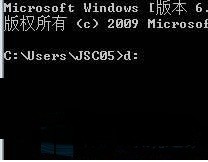 如何在win7系统中删除隧道适配器
如何在win7系统中删除隧道适配器
- 上一篇
- 如何在win7系统中删除隧道适配器
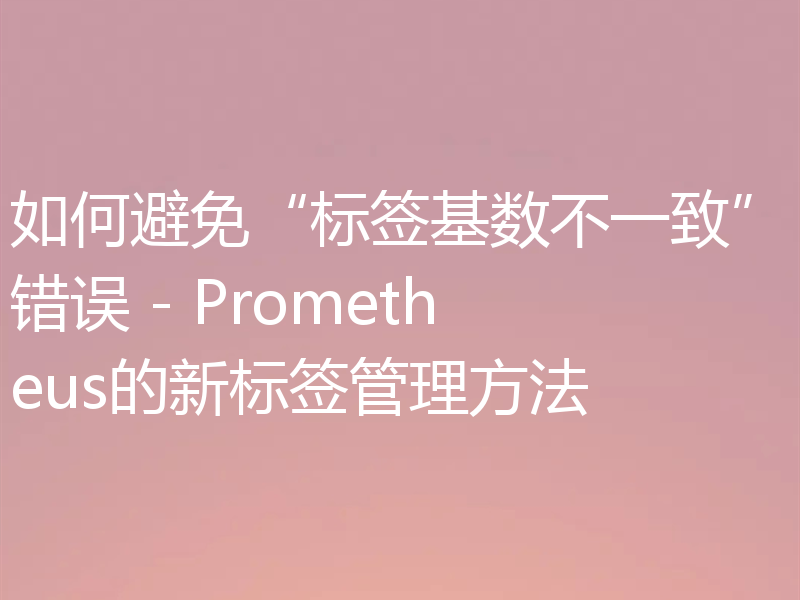
- 下一篇
- 如何避免“标签基数不一致”错误 - Prometheus的新标签管理方法
-
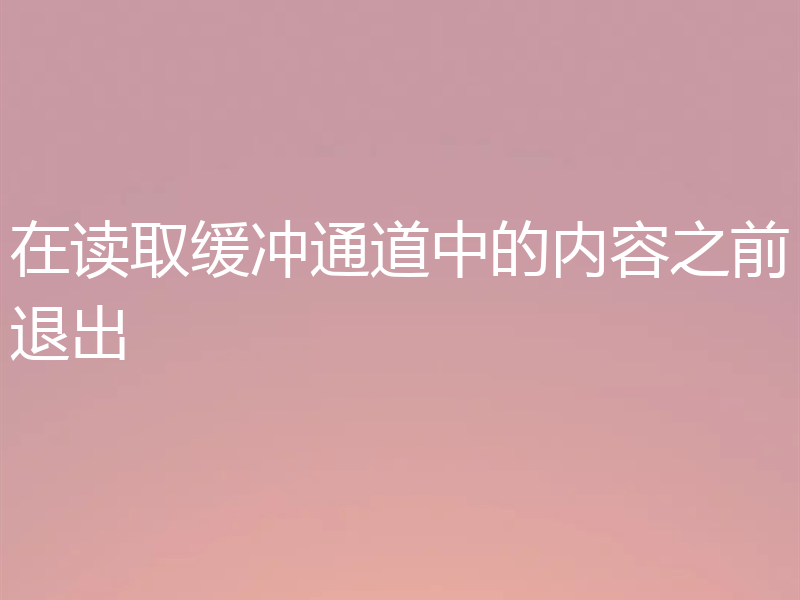
- Golang · Go问答 | 1年前 |
- 在读取缓冲通道中的内容之前退出
- 139浏览 收藏
-
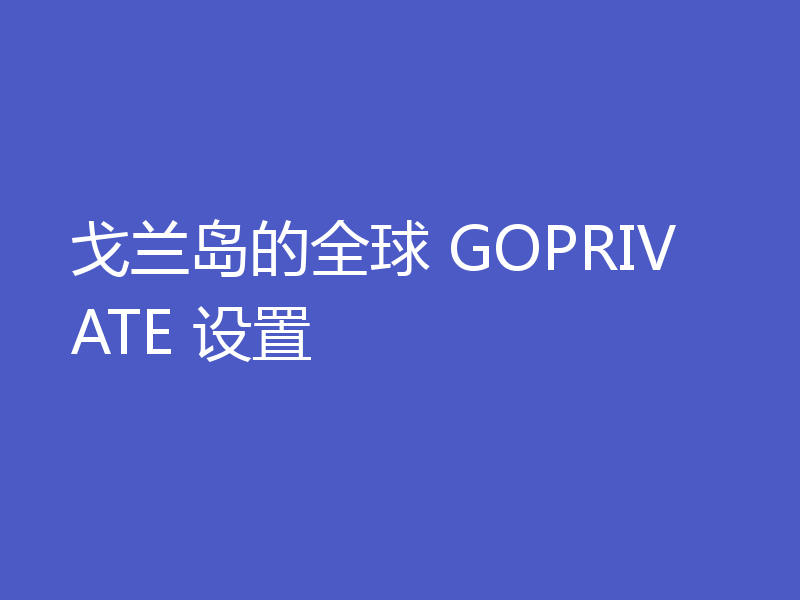
- Golang · Go问答 | 1年前 |
- 戈兰岛的全球 GOPRIVATE 设置
- 204浏览 收藏
-

- Golang · Go问答 | 1年前 |
- 如何将结构作为参数传递给 xml-rpc
- 325浏览 收藏
-

- Golang · Go问答 | 1年前 |
- 如何用golang获得小数点以下两位长度?
- 478浏览 收藏
-
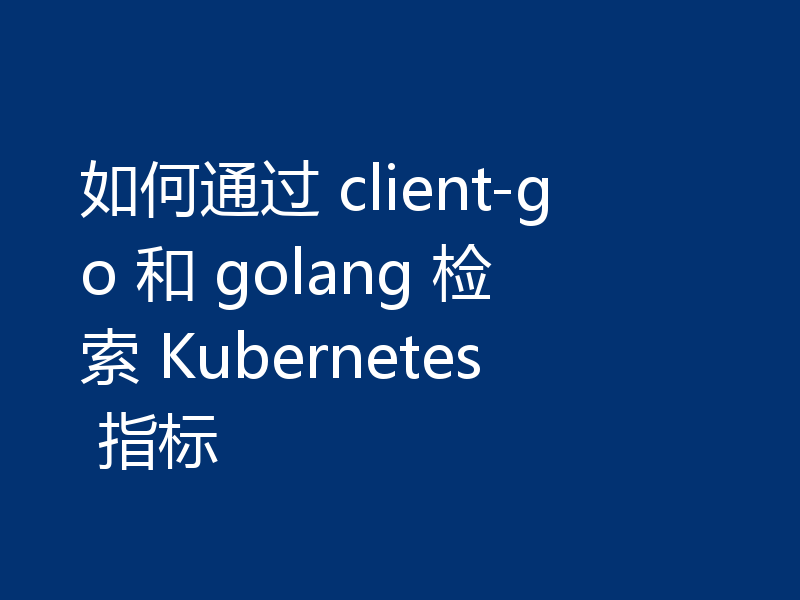
- Golang · Go问答 | 1年前 |
- 如何通过 client-go 和 golang 检索 Kubernetes 指标
- 486浏览 收藏
-
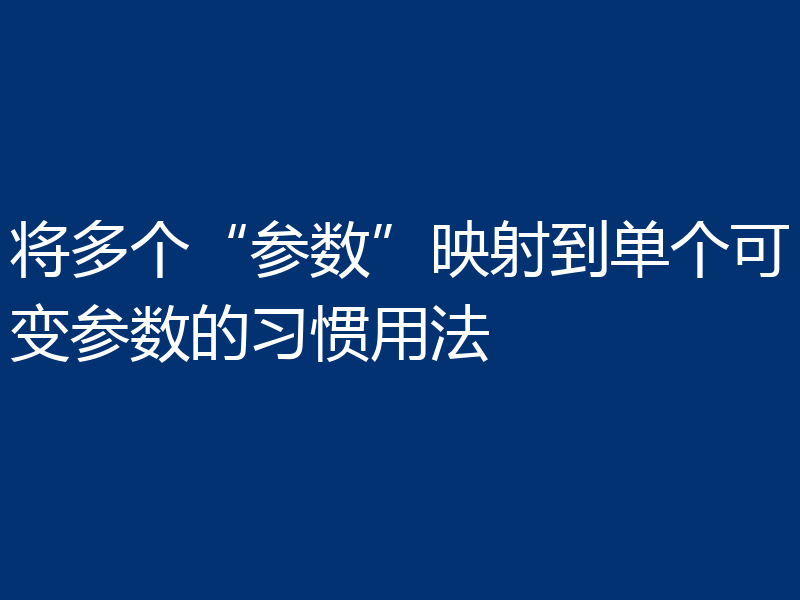
- Golang · Go问答 | 1年前 |
- 将多个“参数”映射到单个可变参数的习惯用法
- 439浏览 收藏
-
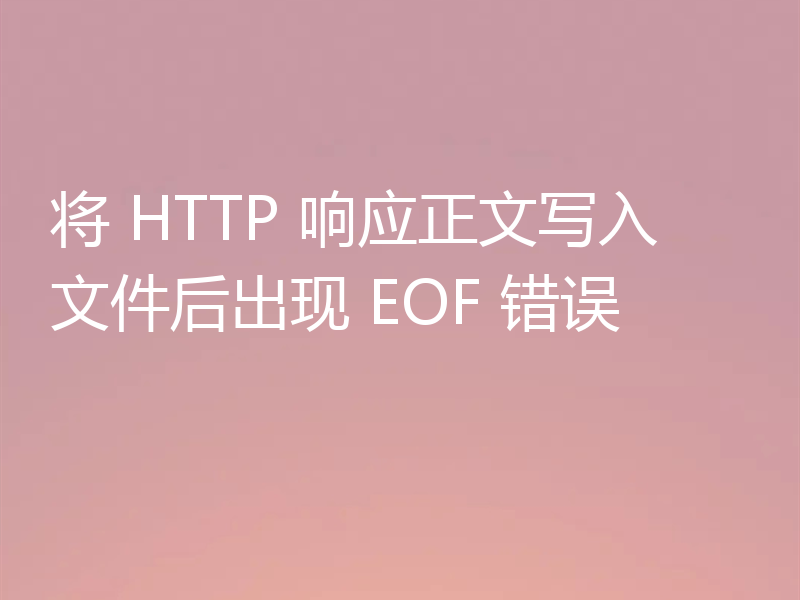
- Golang · Go问答 | 1年前 |
- 将 HTTP 响应正文写入文件后出现 EOF 错误
- 357浏览 收藏
-
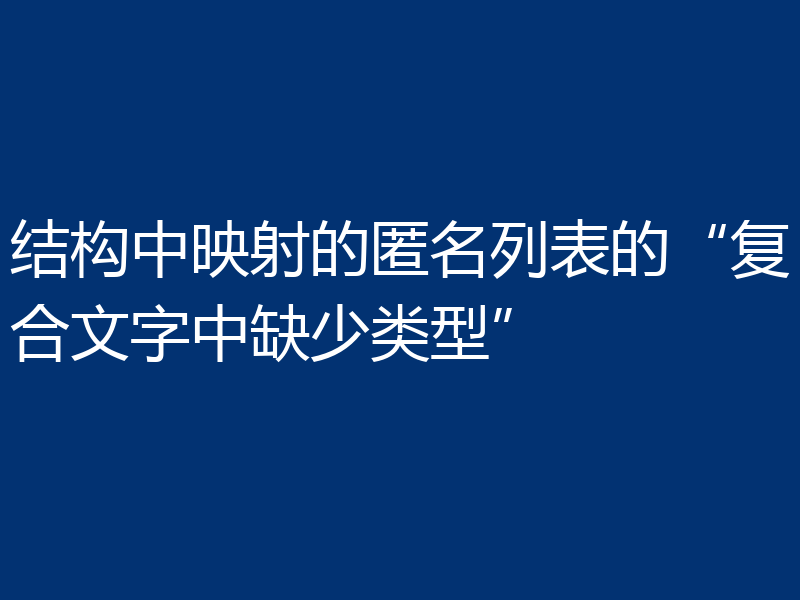
- Golang · Go问答 | 1年前 |
- 结构中映射的匿名列表的“复合文字中缺少类型”
- 352浏览 收藏
-
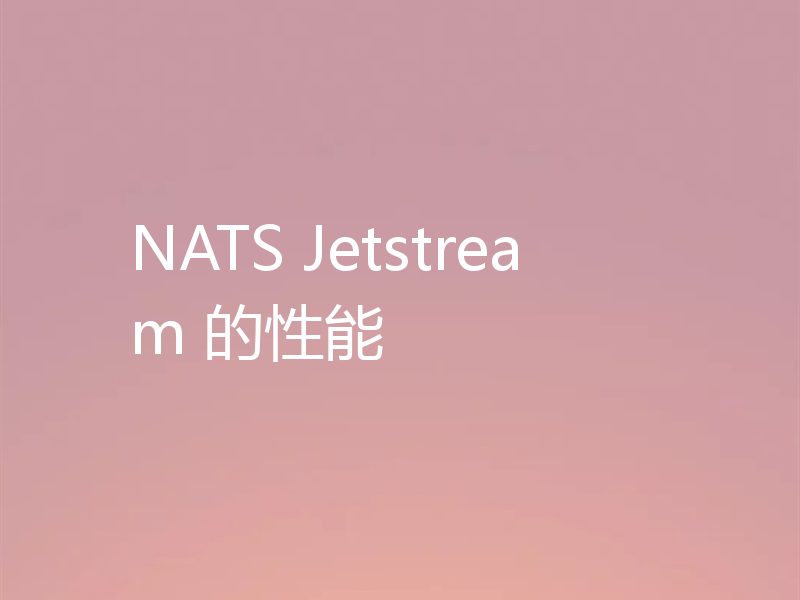
- Golang · Go问答 | 1年前 |
- NATS Jetstream 的性能
- 101浏览 收藏
-
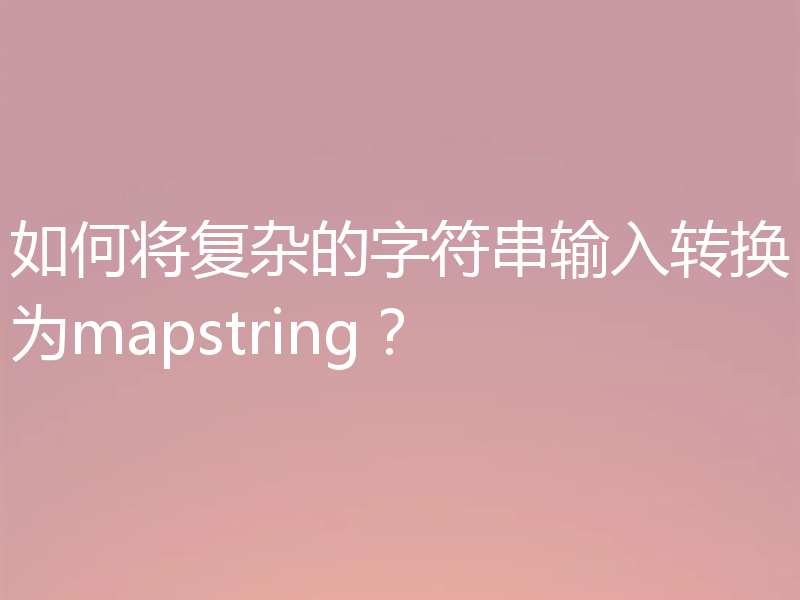
- Golang · Go问答 | 1年前 |
- 如何将复杂的字符串输入转换为mapstring?
- 440浏览 收藏
-
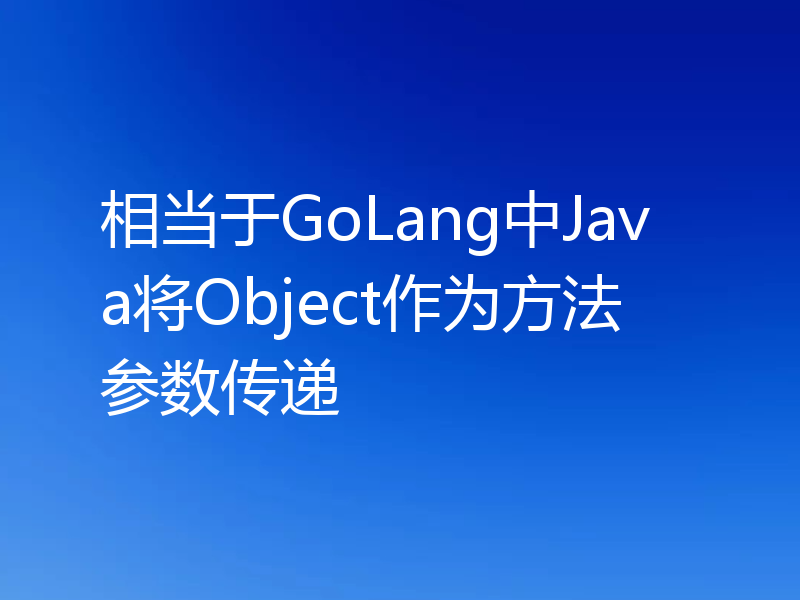
- Golang · Go问答 | 1年前 |
- 相当于GoLang中Java将Object作为方法参数传递
- 212浏览 收藏
-
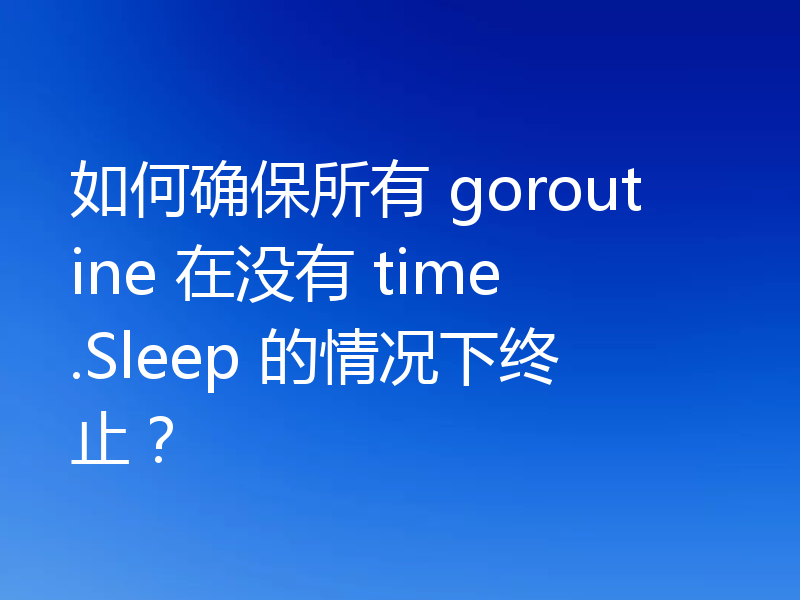
- Golang · Go问答 | 1年前 |
- 如何确保所有 goroutine 在没有 time.Sleep 的情况下终止?
- 143浏览 收藏
-

- 前端进阶之JavaScript设计模式
- 设计模式是开发人员在软件开发过程中面临一般问题时的解决方案,代表了最佳的实践。本课程的主打内容包括JS常见设计模式以及具体应用场景,打造一站式知识长龙服务,适合有JS基础的同学学习。
- 543次学习
-

- GO语言核心编程课程
- 本课程采用真实案例,全面具体可落地,从理论到实践,一步一步将GO核心编程技术、编程思想、底层实现融会贯通,使学习者贴近时代脉搏,做IT互联网时代的弄潮儿。
- 515次学习
-

- 简单聊聊mysql8与网络通信
- 如有问题加微信:Le-studyg;在课程中,我们将首先介绍MySQL8的新特性,包括性能优化、安全增强、新数据类型等,帮助学生快速熟悉MySQL8的最新功能。接着,我们将深入解析MySQL的网络通信机制,包括协议、连接管理、数据传输等,让
- 499次学习
-

- JavaScript正则表达式基础与实战
- 在任何一门编程语言中,正则表达式,都是一项重要的知识,它提供了高效的字符串匹配与捕获机制,可以极大的简化程序设计。
- 487次学习
-

- 从零制作响应式网站—Grid布局
- 本系列教程将展示从零制作一个假想的网络科技公司官网,分为导航,轮播,关于我们,成功案例,服务流程,团队介绍,数据部分,公司动态,底部信息等内容区块。网站整体采用CSSGrid布局,支持响应式,有流畅过渡和展现动画。
- 484次学习
-

- AI Mermaid流程图
- SEO AI Mermaid 流程图工具:基于 Mermaid 语法,AI 辅助,自然语言生成流程图,提升可视化创作效率,适用于开发者、产品经理、教育工作者。
- 777次使用
-

- 搜获客【笔记生成器】
- 搜获客笔记生成器,国内首个聚焦小红书医美垂类的AI文案工具。1500万爆款文案库,行业专属算法,助您高效创作合规、引流的医美笔记,提升运营效率,引爆小红书流量!
- 793次使用
-

- iTerms
- iTerms是一款专业的一站式法律AI工作台,提供AI合同审查、AI合同起草及AI法律问答服务。通过智能问答、深度思考与联网检索,助您高效检索法律法规与司法判例,告别传统模板,实现合同一键起草与在线编辑,大幅提升法律事务处理效率。
- 813次使用
-

- TokenPony
- TokenPony是讯盟科技旗下的AI大模型聚合API平台。通过统一接口接入DeepSeek、Kimi、Qwen等主流模型,支持1024K超长上下文,实现零配置、免部署、极速响应与高性价比的AI应用开发,助力专业用户轻松构建智能服务。
- 876次使用
-

- 迅捷AIPPT
- 迅捷AIPPT是一款高效AI智能PPT生成软件,一键智能生成精美演示文稿。内置海量专业模板、多样风格,支持自定义大纲,助您轻松制作高质量PPT,大幅节省时间。
- 763次使用
-
- GoLand调式动态执行代码
- 2023-01-13 502浏览
-
- 用Nginx反向代理部署go写的网站。
- 2023-01-17 502浏览
-
- Golang取得代码运行时间的问题
- 2023-02-24 501浏览
-
- 请问 go 代码如何实现在代码改动后不需要Ctrl+c,然后重新 go run *.go 文件?
- 2023-01-08 501浏览
-
- 如何从同一个 io.Reader 读取多次
- 2023-04-11 501浏览



